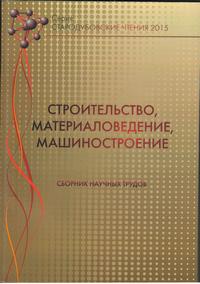The analysis of macro- and microstructure of the railway wheels made by different manufacturing methods
Keywords:
all-rolled railway wheels, cast railway wheels, macrostructure, microstructure, crystallization.Abstract
Purpose. The comparative studies of macro- and microstructure of the cast and all-rolled wheels. Methodology. The analysis of the macro- and microstructure of class C railway wheels, made according to the standard M-107 / M-208 manufacture by GriffinWheel, and all-rolled wheels of steel grade 2, made in accordance with ГОСТ 10791 - 2011 manufacture of PJSC «Interpipe NTRP». Findings. The macro- and microstructure studies of cast and all-rolled railway wheels have been carried out. Due to the features manufacture of the cast wheels (at first a rim crystallizes that is filled with liquid metal through a disk, then the disk and hud crystallize) all defects of cast structure (directional dendritic structure, shrinkage cavities, segregation of alloying and impurity elements) are observed in each elements of the cast railway wheels. It has been shown that contamination by non-metallic inclusions of cast wheels is more than 3 points, there are pores, expressed segregation and microstructure is heterogeneous. The microstructure of all elements of the cast wheel consists of pearlite. It has heterogeneous structure - strongly and weakly etched streaks (areas) due to the presence of dendritic segregation. The solid wheels’ contamination by non-metallic inclusions did not exceed 2 points, pores are not observed. Their microstructure is homogeneous. Originality. It has been shown that contamination by non-metallic inclusions of the cast wheels is more than 3 points, there are pores, expressed segregation, and microstructure is heterogeneous. The contamination by non-metallic inclusions of the all-rolled wheels does not exceed 2 point, pores are not observed, and their microstructure is homogeneous. Practical value. The all-rolled railway wheels have greater operational reliability, so long as their quality is significantly higher by parameters of macro- and microstructure compared with those characteristic of the cast wheels.
References
Yavoyskiy V.I., Levin S.L., Baptizmanskiy V.I. and others. Moscow, Steel Metallurgy, 1973.- 816 p.
Levchenko G.V., Ershov S.V., Demina E.G., and others. Transformatsiya dendritnoy struktury na vseh etapah proizvodstva zheleznodorozhnuh osey [Transformation of the dendritic structure at all stages of production of railway axles] - Metallurgical and Mining Industry, 2008, no. 2, pp. 74-76.
Zhykov A. A. Termodinamicheskie aspektu optimizatsii sostava kompleksnolegirovanih staley [Thermodynamic aspects of optimization of complex alloy steel] - Basics of casting alloys: Proceedings XIV Conference on the Theory of casting processes. - Moscow: Nauka, 1970, pp. 82-85.
Downloads
Published
Issue
Section
License
Редакція Видання категорично засуджує прояви плагіату в статтях та вживає всіх можливих заходів для його недопущення. Плагіат розглядається як форма порушення авторських прав і наукової етики.
При виявлені у статті більш ніж 25% запозиченого тексту без відповідних посилань та використання лапок, стаття кваліфікується як така, що містить плагіат. У цьому випадку стаття більше не розглядається редакцією, а автор отримує перше попередження.
Автори, в статтях яких повторно виявлено плагіат, не зможуть публікуватися в усіх журналах Видавництва ДВНЗ «Придніпровська державна академія будівництва та архітектури».
Автори, які публікуються у цьому журналі, погоджуються з наступними умовами:
- Автори залишають за собою право на авторство своєї роботи та передають журналу право першої публікації цієї роботи на умовах ліцензії Creative Commons Attribution License, котра дозволяє іншим особам вільно розповсюджувати опубліковану роботу з обов'язковим посиланням на авторів оригінальної роботи та першу публікацію роботи у цьому журналі.
- Автори мають право укладати самостійні додаткові угоди щодо неексклюзивного розповсюдження роботи у тому вигляді, в якому вона була опублікована цим журналом (наприклад, розміщувати роботу в електронному сховищі установи або публікувати у складі монографії), за умови збереження посилання на першу публікацію роботи у цьому журналі.
- Політика журналу дозволяє і заохочує розміщення авторами в мережі Інтернет (наприклад, у сховищах установ або на особистих веб-сайтах) рукопису роботи, як до подання цього рукопису до редакції, так і під час його редакційного опрацювання, оскільки це сприяє виникненню продуктивної наукової дискусії та позитивно позначається на оперативності та динаміці цитування опублікованої роботи (див. The Effect of Open Access).

